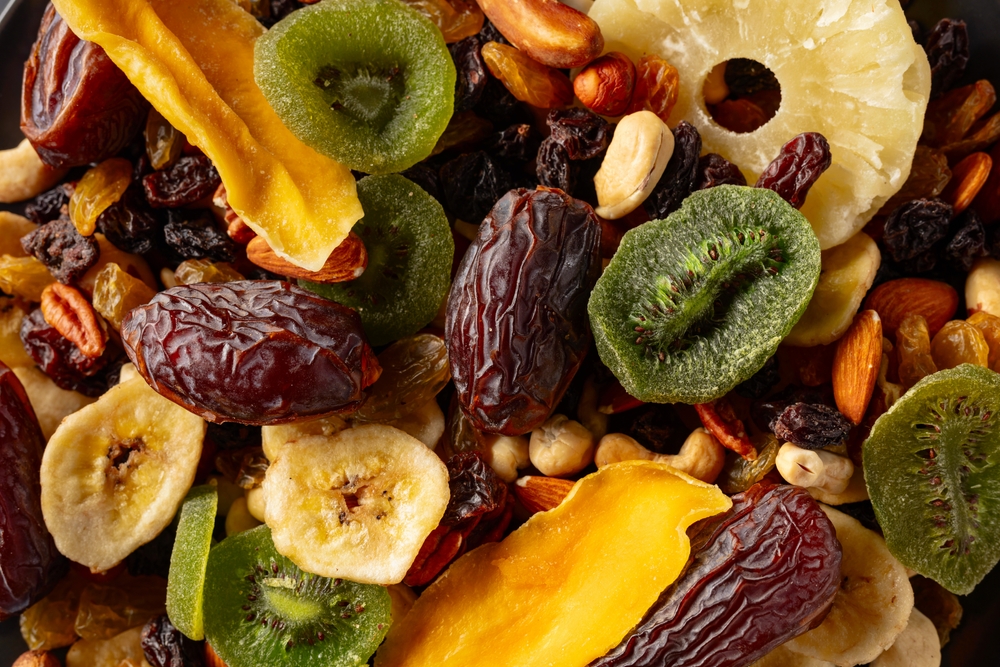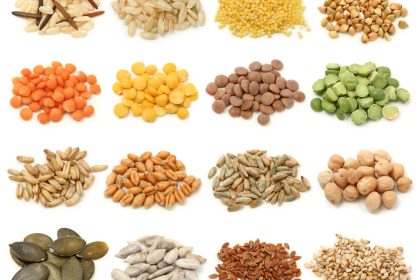A groundbreaking research study has upended conventional wisdom about dried fruit consumption and its relationship to diabetes risk. The extensive investigation, involving half a million participants, demonstrates that regular dried fruit consumption might significantly reduce the risk of developing type 2 diabetes, challenging long-held beliefs about their sugar content.
Revolutionary findings in nutritional science
The comprehensive study, published in BMC Nutrition & Metabolism, presents compelling evidence that dried fruit consumption could lower type 2 diabetes risk by as much as 60.8%. This finding marks a significant shift in understanding the relationship between concentrated natural sugars and metabolic health. The study’s results defy previous assumptions that dried fruits, with their concentrated sugars, contribute to weight gain and metabolic disorders. Researchers suggest that, when consumed in moderation, dried fruits might offer health benefits far beyond their high sugar content.
The study’s authors emphasize the importance of understanding the full nutritional profile of dried fruits. By concentrating the sugars during the dehydration process, dried fruits contain a higher concentration of nutrients than their fresh counterparts. This unique nutritional density could explain their surprising health benefits.
Understanding the protective mechanisms
The research reveals several potential mechanisms through which dried fruits might protect against diabetes. Their high fiber content appears to play a crucial role in blood sugar regulation, while their concentrated nutrient profile may offer additional metabolic benefits. The findings suggest that the fiber in dried fruits can help slow the absorption of sugars into the bloodstream, preventing rapid spikes in blood sugar levels. This slower absorption may reduce the likelihood of insulin resistance, a major factor in the development of type 2 diabetes.
Another key factor in the protective effects of dried fruits is their ability to provide a range of micronutrients. These nutrients, including antioxidants and essential vitamins, could help reduce inflammation and oxidative stress, which are associated with the development of diabetes and other metabolic disorders.
Nutritional density and health impact
Dried fruits represent a unique category of foods where the dehydration process concentrates both nutrients and natural sugars. This concentration creates a nutritional profile distinct from fresh fruits, with potential advantages for metabolic health. While fresh fruit contains a higher water content, the dehydration process preserves and intensifies the flavors, nutrients, and sugars in dried fruits, making them a powerful source of nutrition in smaller portions.
The higher concentration of vitamins and minerals in dried fruits means they can provide significant health benefits without requiring large quantities. This makes dried fruits an ideal choice for individuals seeking to enhance their diet with nutrient-dense foods that are easy to store and incorporate into their daily routines.
Fiber content and blood sugar regulation
The fiber content in dried fruits emerges as a key factor in their potential protective effects. This dietary fiber helps moderate blood sugar absorption, potentially explaining the paradoxical relationship between their high sugar content and beneficial metabolic effects. Unlike refined sugars, the natural sugars in dried fruits are accompanied by fiber, which slows their digestion and absorption into the bloodstream.
In addition to improving blood sugar regulation, fiber also plays a vital role in digestive health, supporting healthy gut bacteria and reducing the risk of digestive issues. This makes dried fruits a valuable addition to the diet, especially for those looking to manage their blood sugar levels or prevent the onset of type 2 diabetes.
Practical implementation strategies
The research suggests several approaches for incorporating dried fruits into a healthy diet. Successful integration involves careful portion control, pairing with other foods, and selecting the right types of dried fruits.
Portion control guidelines
Healthcare professionals recommend specific portion sizes to maximize benefits while managing caloric intake. It is advised that daily servings of dried fruits should not exceed one quarter cup. Portion timing also matters, with recommendations for consuming dried fruits with main meals to help regulate blood sugar levels. Strategic pairing with other foods can also optimize absorption and benefits, ensuring that individuals reap the full nutritional value without overconsumption of sugars.
Food pairing recommendations
To maximize the benefits of dried fruits, experts suggest combining them with protein sources to slow sugar absorption. Healthy fats can enhance nutrient absorption, while pairing with fiber-rich foods supports digestive health. By combining dried fruits with other nutritious foods, individuals can create a balanced, diabetes-friendly diet that is both satisfying and healthy.
Selection criteria
When selecting dried fruits, consumers should prioritize unsweetened varieties without added sugars. Preservative-free options are also recommended, as they tend to contain fewer additives that could undermine their nutritional value. Additionally, choosing dried fruits with minimal processing ensures that the nutrients are preserved, maximizing the potential health benefits.
Impact on public health
The implications of these findings extend beyond individual health choices to broader public health considerations. The accessibility and shelf-stability of dried fruits make them particularly valuable for improving nutritional intake across diverse populations. Dried fruits can be a convenient, affordable option for people living in areas where fresh fruits are difficult to obtain or store.
By incorporating dried fruits into their diets, individuals could reduce the risk of developing chronic conditions like type 2 diabetes. This would not only benefit personal health but could also reduce the burden on healthcare systems worldwide. The findings from this study may spark a reevaluation of dietary guidelines and food recommendations in clinical nutrition.
Future research directions
This study opens new avenues for investigation into the relationship between food processing methods and health outcomes. Researchers are particularly interested in understanding the specific compounds in dried fruits that might contribute to their protective effects. Future studies will likely focus on identifying the exact mechanisms by which dried fruits affect insulin sensitivity and metabolic health.
Healthcare providers are beginning to reevaluate dietary recommendations regarding dried fruit consumption, particularly for individuals at risk for type 2 diabetes. This shift represents a significant change in clinical nutrition guidance and could lead to more personalized, effective dietary strategies for preventing chronic diseases.
Reshaping perceptions about dried fruits
The study’s findings represent a significant advancement in understanding the relationship between food processing methods and health outcomes. This research challenges preconceptions about concentrated natural sugars while opening new possibilities for diabetes prevention through dietary modification. The role of dried fruits in reducing diabetes risk is far more complex and beneficial than previously thought.
As the scientific community continues to explore the connection between diet and metabolic health, it is clear that dried fruits could play a crucial role in preventing chronic diseases like type 2 diabetes. By incorporating dried fruits in moderation, along with mindful pairing and portion control, individuals can unlock the potential health benefits of these often-overlooked foods.















